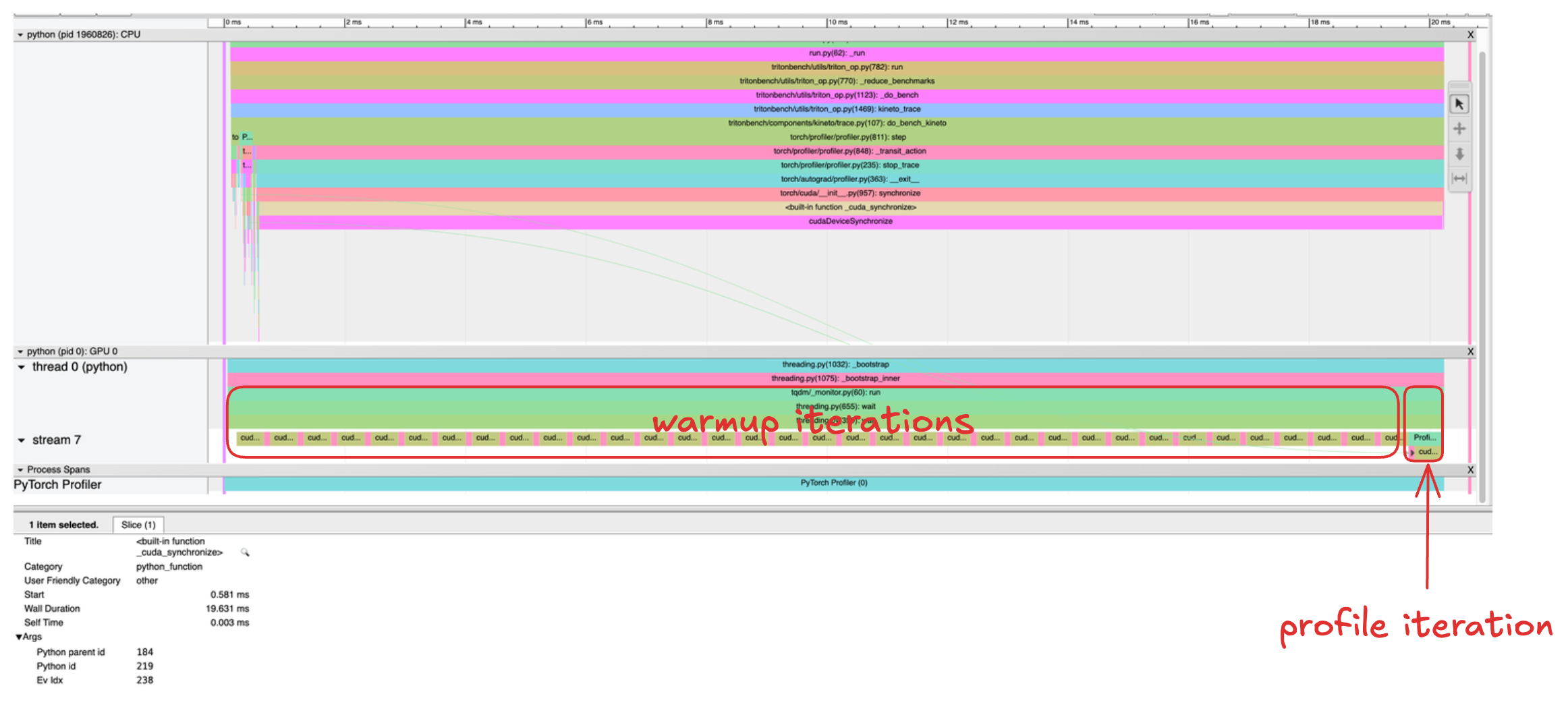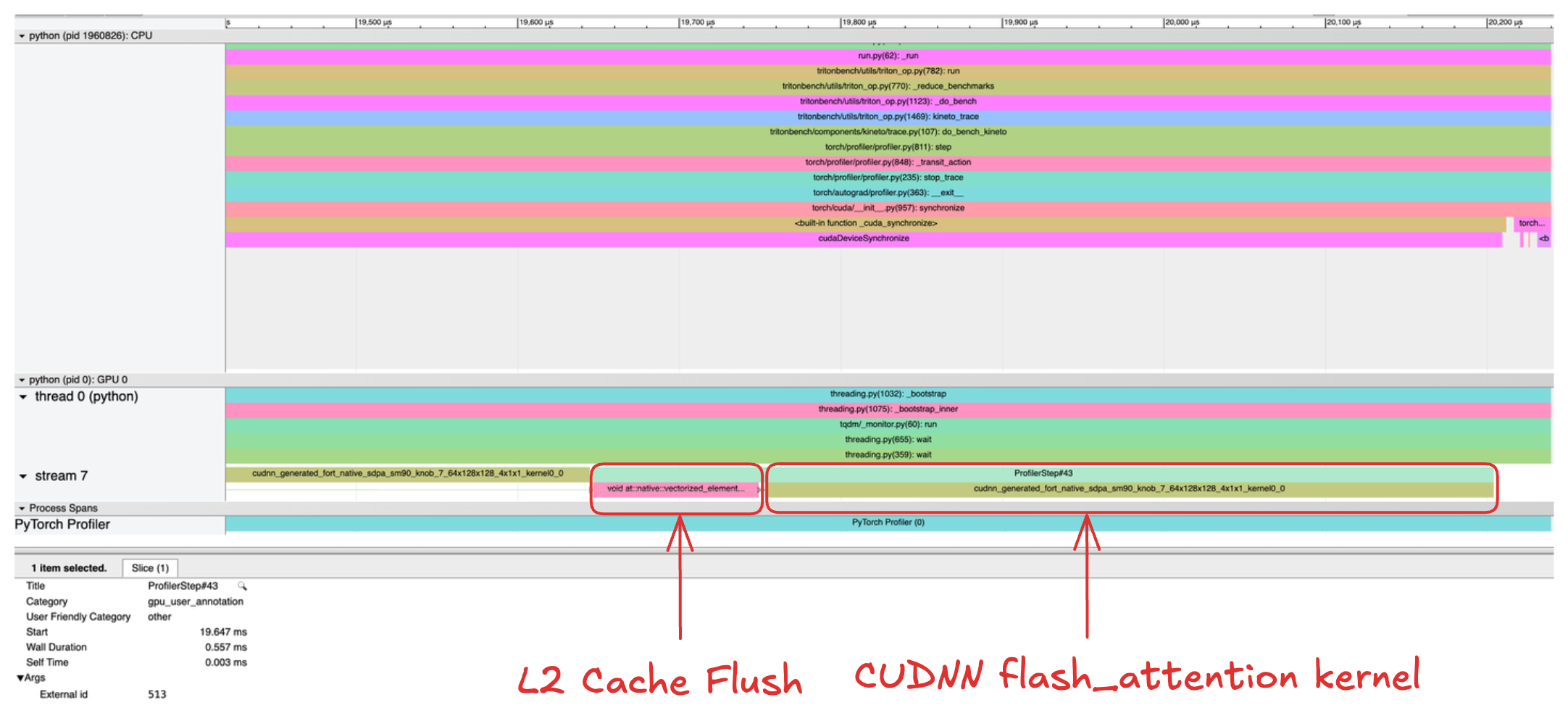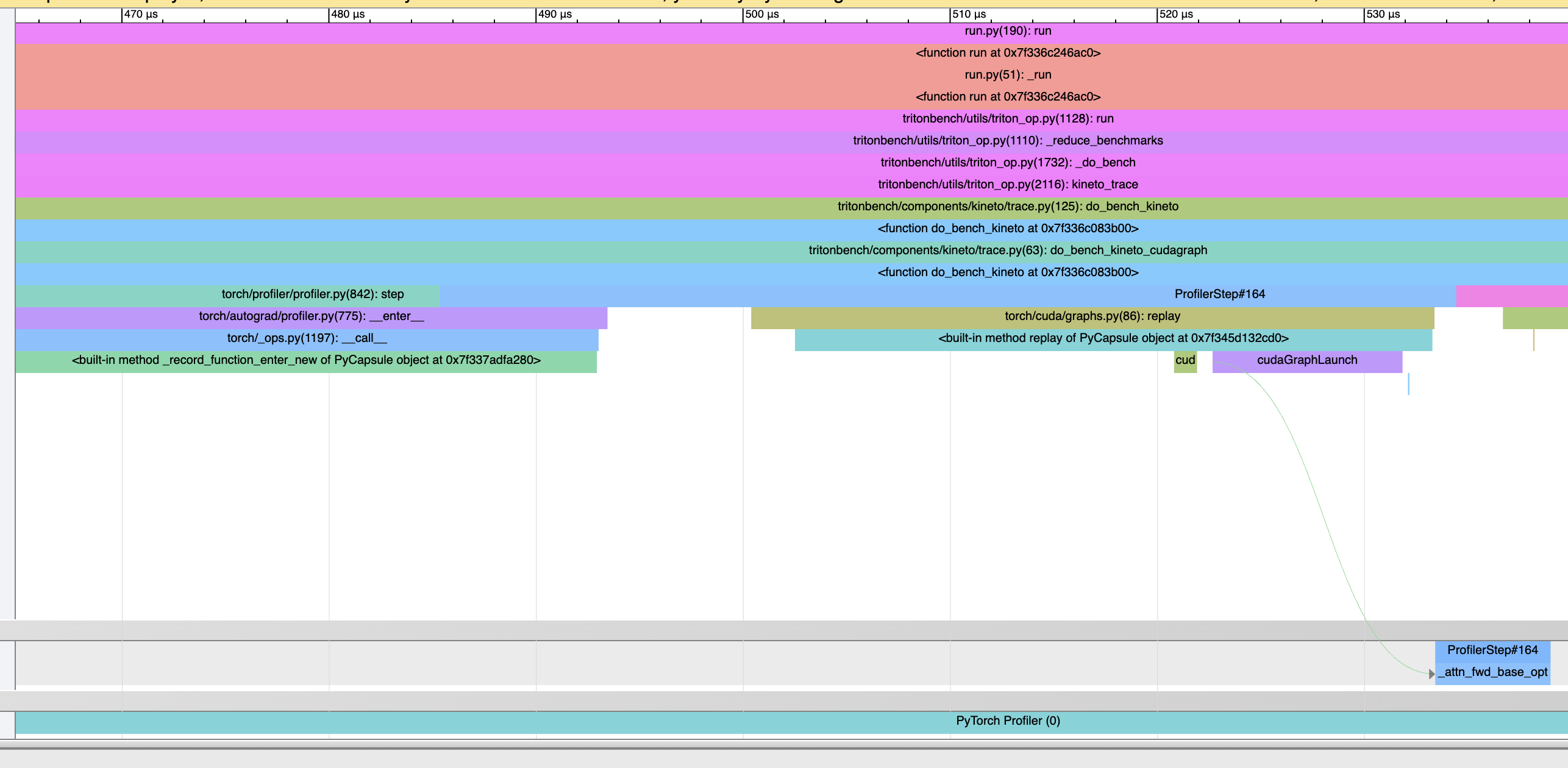-
Notifications
You must be signed in to change notification settings - Fork 46
Kineto Trace Analysis with TritonBench
TritonBench supports generating a Kineto trace file for each <input, impl> pair.
We use the following command to generate 6 Kineto traces, as it is running 2 inputs(--num-inputs 2) with 3 impls (flash_v3,cudnn,triton_tutorial_flash_v2).
$ python run.py --op flash_attention --num-inputs 2 --metrics kineto_trace --only flash_v3,cudnn,triton_tutorial_flash_v2
(Batch, Heads, SeqLen, Dhead) flash_v3-kineto_trace cudnn_90100-kineto_trace triton_tutorial_flash_v2-kineto_trace
------------------------------- --------------------------------------------------------- ------------------------------------------------------ -------------------------------------------------------------------------
(4, 48, 128, 64) /tmp/tritonbench/flash_attention/kineto_traces/flash_v3_0 /tmp/tritonbench/flash_attention/kineto_traces/cudnn_0 /tmp/tritonbench/flash_attention/kineto_traces/triton_tutorial_flash_v2_0
(4, 48, 256, 64) /tmp/tritonbench/flash_attention/kineto_traces/flash_v3_1 /tmp/tritonbench/flash_attention/kineto_traces/cudnn_1 /tmp/tritonbench/flash_attention/kineto_traces/triton_tutorial_flash_v2_1
The output table shows the directory where the Kineto trace file is stored.
Opening the trace file with Chrome Trace Viewer, we need to first separate the profiling iteration with the warm-up iterations.
The profiling iteration runs after all warm-up iteraions and is labeled by ProfilerStep#<number>.
Zooming into the profile iteration, we find two GPU kernels launched. The first one corresponds to the L2 Cache flush to clear the cache. The second one corresponds to the actual computation kernel, which is from CUDNN in this flash_attention operator.
If the operator supports CUDA Graph and CUPTI, we can generate Kineto trace with CUDA Graph enabled. To do that, simply combine --cudagraph with --metrics kineto_trace.
Here is an example command:
$ python run.py --op flash_attention --num-inputs 1 --metrics kineto_trace --only triton_tutorial_flash_v2 --cudagraph
(Batch, Heads, SeqLen, SeqLen_KV, Dhead) triton_tutorial_flash_v2-kineto_trace
------------------------------------------ ---------------------------------------------------------------------------
(4, 48, 128, 128, 64) /tmp/tritonbench_xzhao9/bf16_flash_attention_fwd/triton_tutorial_flash_v2_0
average


